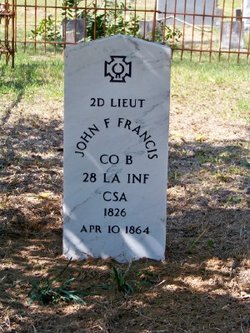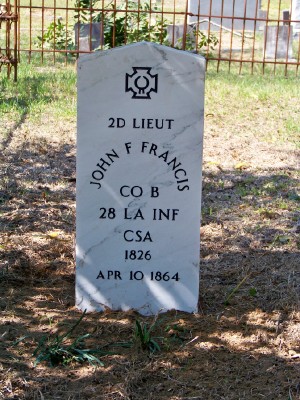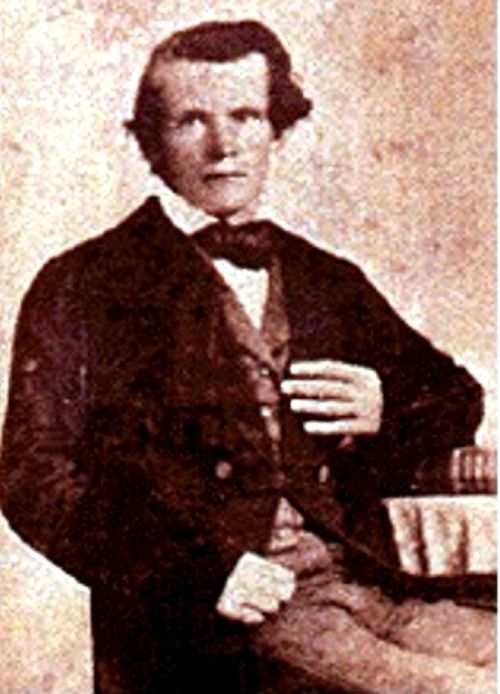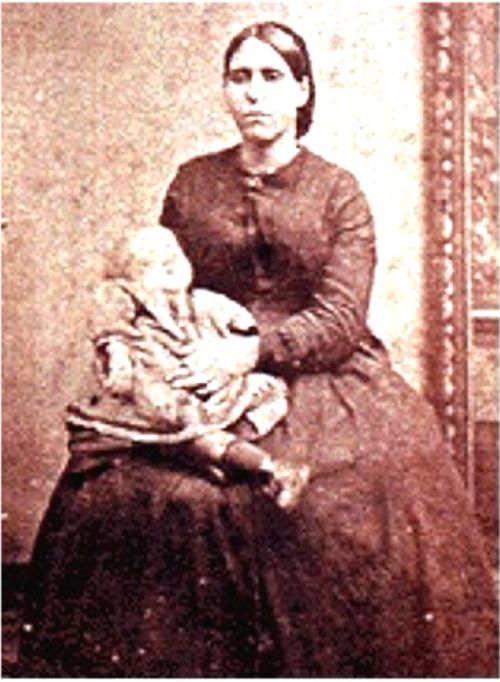The spring of 1864 found John at home in Mansfield, Louisiana when the approach of the Union Army from the south, in the infamous Red River Campaign, brought the war to their front door and brought forth every man in Louisiana that was able to fight, forming ranks during the Battle of Mansfield. Local history relates Francis cared for the wounded of Confederate and Union forces alike as they were brought to the church in town, which had been converted into hospitals. Several colleges, churches and homes in Mansfield became battlefield hospitals. The most severe cases of both sides were taken to the Baptist Church. "At dark on the eve of the tenth, one of the nurses lighted a candle and holding it in one hand attended the patient with the other, but the delirious patient struck down the candle and the light, catching the loose cotton used as bedding, set it on fire, and in a moment the flames filled the building. To save the wounded from death by burning, the men who were in Mansfield rushed in and carrying the patients through the fire or casting them out of the windows saved about 200 soldiers from a horrible death. As the rescuers were about to abandon the work, a young Creole Confederate soldier suffering from slight wounds and a young Union soldier arrived upon the scene and answered the wild calls for help from within. The fatigued rescuers joined them and another dozen of the men were saved from the flames." The Baptist Church was burned to the ground. Several died in the fire, some being the rescuers including John Fearn Francis who was said to have been tending the worst of the wounded; in an attempt to rescue the wounded from the burning building. John died on April 8, 1864 during the period of the Battle of Mansfield, while caring for the military wounded of both armies.
John was buried in the Mansfield City Cemetery, Special Section, which includes 10 unmarked graves of soldiers killed in the Mansfield Battle. After returning to Australia, Ellen met and married Alexander Wannan and John's three children took the name Fearn-Wannan; which their descendants bear to this day.
In March 2007 James Gray, a Confederate descendant himself and a member of the Sons of Confederate Veterans, with the American Civil War Roundtable of Queensland, Inc. of which he is a member, enlisted the assistance of Mr. David Hill, Commander of the Lt. General Richard Taylor Camp # 1308 of the Sons of Confederate Veterans of Louisiana, and an official military headstone was acquired from the American Veterans Administration for placement on the gravesite of the Australian hero John Fearn Francis; as he was known at the time of his death.
The spring of 1864 found John at home in Mansfield, Louisiana when the approach of the Union Army from the south, in the infamous Red River Campaign, brought the war to their front door and brought forth every man in Louisiana that was able to fight, forming ranks during the Battle of Mansfield. Local history relates Francis cared for the wounded of Confederate and Union forces alike as they were brought to the church in town, which had been converted into hospitals. Several colleges, churches and homes in Mansfield became battlefield hospitals. The most severe cases of both sides were taken to the Baptist Church. "At dark on the eve of the tenth, one of the nurses lighted a candle and holding it in one hand attended the patient with the other, but the delirious patient struck down the candle and the light, catching the loose cotton used as bedding, set it on fire, and in a moment the flames filled the building. To save the wounded from death by burning, the men who were in Mansfield rushed in and carrying the patients through the fire or casting them out of the windows saved about 200 soldiers from a horrible death. As the rescuers were about to abandon the work, a young Creole Confederate soldier suffering from slight wounds and a young Union soldier arrived upon the scene and answered the wild calls for help from within. The fatigued rescuers joined them and another dozen of the men were saved from the flames." The Baptist Church was burned to the ground. Several died in the fire, some being the rescuers including John Fearn Francis who was said to have been tending the worst of the wounded; in an attempt to rescue the wounded from the burning building. John died on April 8, 1864 during the period of the Battle of Mansfield, while caring for the military wounded of both armies.
John was buried in the Mansfield City Cemetery, Special Section, which includes 10 unmarked graves of soldiers killed in the Mansfield Battle. After returning to Australia, Ellen met and married Alexander Wannan and John's three children took the name Fearn-Wannan; which their descendants bear to this day.
In March 2007 James Gray, a Confederate descendant himself and a member of the Sons of Confederate Veterans, with the American Civil War Roundtable of Queensland, Inc. of which he is a member, enlisted the assistance of Mr. David Hill, Commander of the Lt. General Richard Taylor Camp # 1308 of the Sons of Confederate Veterans of Louisiana, and an official military headstone was acquired from the American Veterans Administration for placement on the gravesite of the Australian hero John Fearn Francis; as he was known at the time of his death.
Advertisement
Records on Ancestry
Advertisement








